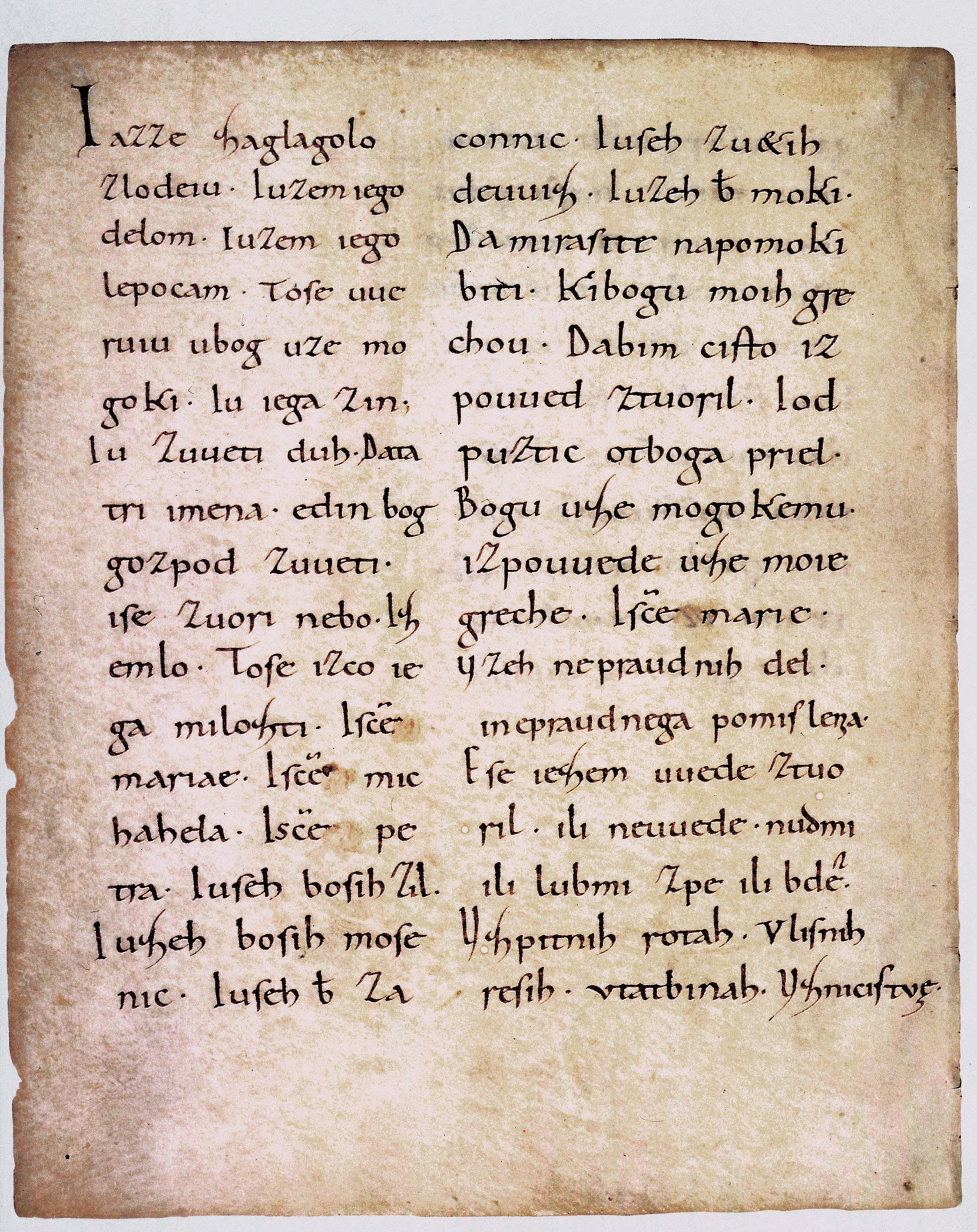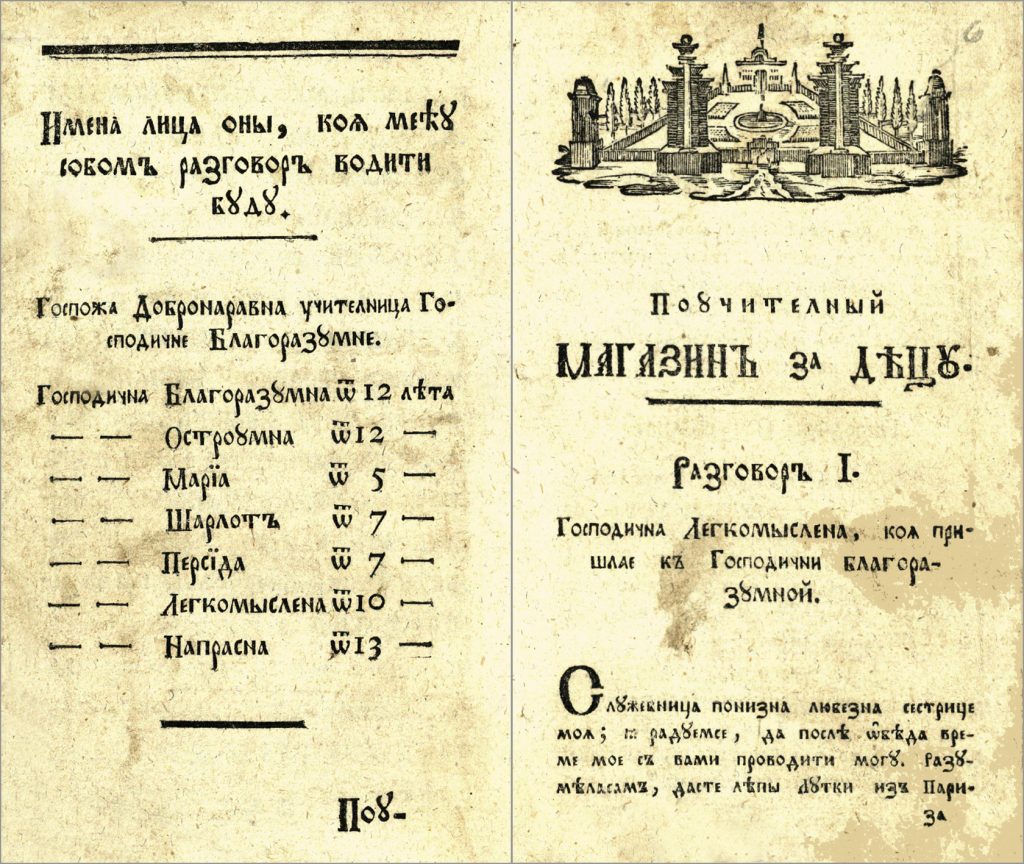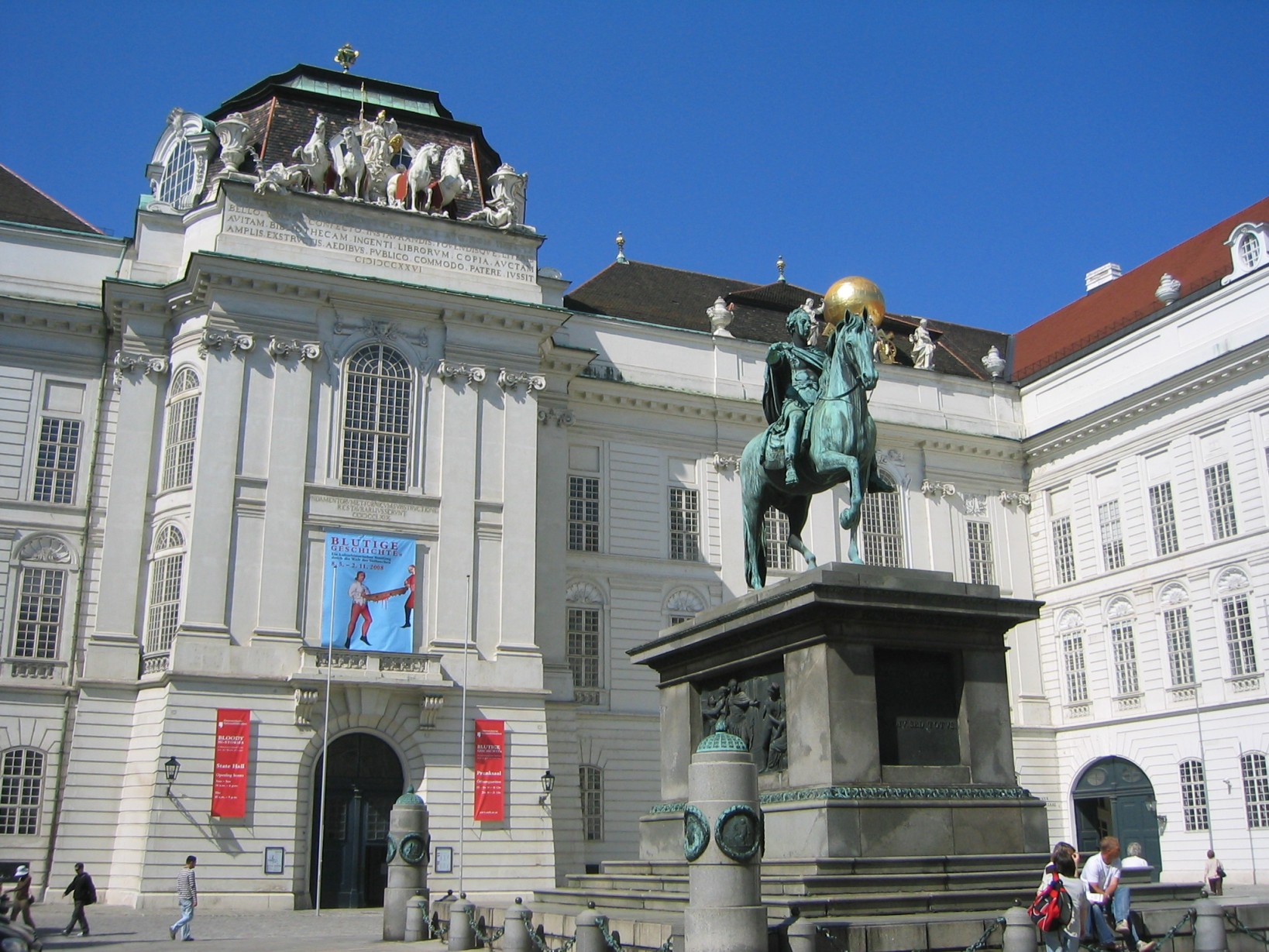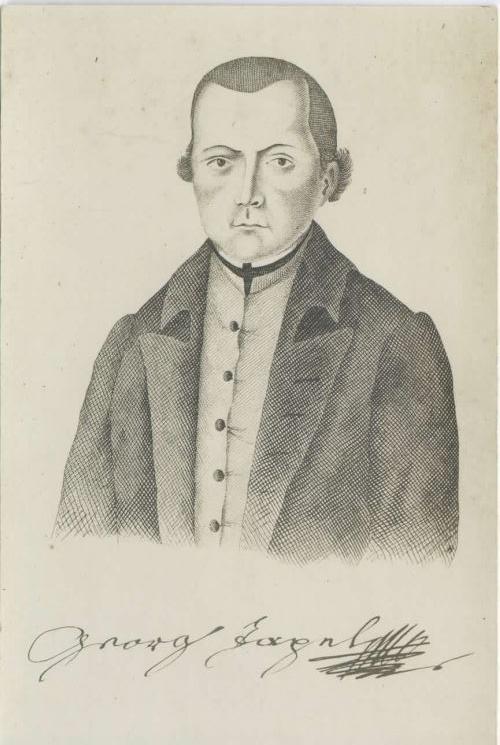|
Jernej Kopitar
Jernej Kopitar, also known as Bartholomeus Kopitar (21 August 1780 – 11 August 1844), was a Slovene linguist and philologist working in Vienna. He also worked as the Imperial censor for Slovene literature in Vienna. He is perhaps best known for his role in the Serbian language reform started by Vuk Stefanović Karadžić, where he played a vital role in supporting the reform by using his reputation and influence as a Slavic philologist. Early life Kopitar was born in the small Carniolan village of Repnje near Vodice, in what was then the Habsburg monarchy and is now in Slovenia. After graduating from the lyceum in Ljubljana, he became a private teacher in the house of baron Sigmund Zois, a renowned entrepreneur, scientist and patron of arts. Kopitar later became Zois' personal secretary and librarian. During this period, he became acquainted with the circle of Enlightenment intellectuals that gathered in Zois' mansion, such as the playwright and historian Anton Tomaž ... [...More Info...] [...Related Items...] OR: [Wikipedia] [Google] [Baidu] |
Repnje
Repnje (; ''Leksikon občin kraljestev in dežel zastopanih v državnem zboru,'' vol. 6: ''Kranjsko''. 1906. Vienna: C. Kr. Dvorna in Državna Tiskarna, p. 32. ) is a village in the Municipality of Vodice in the Upper Carniola region of Slovenia. In the centre of the village is Repnje Castle, built in the late 19th century. It now houses a Franciscan convent with an adjacent church. Church The main church of the settlement is built on a hill above the village. It is dedicated to Saint Giles and a portion of its defense wall, built against Ottoman raids, still survives today. Notable people Notable people that were born or lived in Repnje include: *Jernej Kopitar Jernej Kopitar, also known as Bartholomeus Kopitar (21 August 1780 – 11 August 1844), was a Slovene linguist and philologist working in Vienna. He also worked as the Imperial censor for Slovene literature in Vienna. He is perhaps best known ... (1780–1844), linguist References External links *Repnje on Geo ... [...More Info...] [...Related Items...] OR: [Wikipedia] [Google] [Baidu] |
Age Of Enlightenment
The Age of Enlightenment (also the Age of Reason and the Enlightenment) was a Europe, European Intellect, intellectual and Philosophy, philosophical movement active from the late 17th to early 19th century. Chiefly valuing knowledge gained through rationalism and empiricism, the Enlightenment was concerned with a wide range of social and Politics, political ideals such as natural law, liberty, and progress, toleration and fraternity (philosophy), fraternity, constitutional government, and the formal separation of church and state. The Enlightenment was preceded by and overlapped the Scientific Revolution, which included the work of Johannes Kepler, Galileo Galilei, Francis Bacon, Pierre Gassendi, Christiaan Huygens and Isaac Newton, among others, as well as the philosophy of Descartes, Hobbes, Spinoza, Leibniz, and John Locke. The dating of the period of the beginning of the Enlightenment can be attributed to the publication of René Descartes' ''Discourse on the Method'' in 1 ... [...More Info...] [...Related Items...] OR: [Wikipedia] [Google] [Baidu] |
Freising Manuscripts
The Freising manuscriptsAlso ''Freising folia'', ''Freising fragments'', or ''Freising monuments''; , , or are the first Latin-script continuous text in a Slavic language and the oldest document in Slovene. Description and origin The manuscripts were found bound into a Latin codex (manuscript book). Four parchment leaves and a further quarter of a page have been preserved (i.e., folia 78, 158, 159, 160, and 161, comprising nine pages altogether). They consist of three texts in the oldest Slovene dialect. Linguistic, stylistic and contextual analyses reveal that these are church texts of careful composition and literary form. The precise date of the origin of the Freising manuscripts cannot be exactly determined; the original text was probably written in the 9th century. In this liturgic and homiletic manuscript, three Slovene records were found and this miscellany was probably an episcopal manual (pontificals). The Freising manuscripts in it were created between 972 and ... [...More Info...] [...Related Items...] OR: [Wikipedia] [Google] [Baidu] |
Styria (duchy)
The Duchy of Styria (; ; ) was a duchy located in modern-day southern Austria and northern Slovenia. It was a part of the Holy Roman Empire until its dissolution in 1806 and a Cisleithanian crown land of Austria-Hungary until its dissolution in 1918. History It was created by Emperor Frederick Barbarossa in 1180 when he raised the March of Styria to a duchy of equal rank with neighbouring Carinthia and Bavaria, after the fall of the Bavarian Duke Henry the Lion earlier that year. Margrave Ottokar IV thereby became the first duke of Styria and also the last of the ancient Otakar dynasty. As Ottokar had no issue, he in 1186 signed the Georgenberg Pact with the mighty House of Babenberg, rulers of Austria since 976, after which both duchies should in perpetuity be ruled in personal union. Upon his death in 1192, Styria as stipulated fell to the Babenberg Leopold V, Duke of Austria. The Austrian Babenbergs became extinct in 1246, when Duke Frederick II was killed in battle a ... [...More Info...] [...Related Items...] OR: [Wikipedia] [Google] [Baidu] |
Carinthia (duchy)
The Duchy of Carinthia (; ; ) was a duchy located in southern Austria and parts of northern Slovenia. It was separated from the Duchy of Bavaria in 976, and was the first newly created Imperial State after the original German stem duchies. Carinthia remained a State of the Holy Roman Empire until its dissolution in 1806, though from 1335 it was ruled within the Austrian dominions of the Habsburg dynasty. A constituent part of the Habsburg monarchy and of the Austrian Empire, it remained a Cisleithanian crown land of Austria-Hungary until 1918. By the 1920 Carinthian plebiscite in October 1920, the main area of the duchy formed the Austrian state of Carinthia. History In the seventh century the area was part of the Slavic principality of Carantania, which fell under the suzerainty of Duke Odilo of Bavaria in about 743. The Bavarian stem duchy was incorporated into the Carolingian Empire when Charlemagne deposed Odilo's son Duke Tassilo III in 788. In the 843 partition by th ... [...More Info...] [...Related Items...] OR: [Wikipedia] [Google] [Baidu] |
Slovene Language
Slovene ( or ) or Slovenian ( ; ) is a South Slavic languages, South Slavic language of the Balto-Slavic languages, Balto-Slavic branch of the Indo-European languages, Indo-European language family. Most of its 2.5 million speakers are the inhabitants of Slovenia, the majority of them ethnic Slovenes. As Slovenia is part of the European Union, Slovene is also one of its 24 Languages of the European Union, official and working languages. Its grammar is highly fusional languages, fusional, and it has a Dual (grammatical number), dual grammatical number, an archaic feature shared with some other Indo-European languages. Two accentual norms (one characterized by Pitch-accent language, pitch accent) are used. Its flexible word order is often adjusted for emphasis or stylistic reasons, although basically it is an subject–verb–object word order, SVO language. It has a T–V distinction: the use of the V-form demonstrates a respectful attitude towards superiors and the elderly, ... [...More Info...] [...Related Items...] OR: [Wikipedia] [Google] [Baidu] |
Vuk Karadžić
Vuk Stefanović Karadžić ( sr-Cyrl, Вук Стефановић Караџић, ; 6 November 1787 (26 October OS)7 February 1864) was a Serbian philologist, anthropologist and linguist. He was one of the most important reformers of the modern Serbian language. For his collection and preservation of Serbian folktales, ''Encyclopædia Britannica'' labelled Karadžić "the father of Serbian folk-literature scholarship." He was also the author of the first Serbian dictionary in the new reformed language. In addition, he translated the New Testament into the reformed form of the Serbian spelling and language. He was well known abroad and familiar to Jacob Grimm, Johann Wolfgang von Goethe and historian Leopold von Ranke. Karadžić was the primary source for Ranke's ''Die serbische Revolution'' (" The Serbian Revolution"), written in 1829. Biography Early life Karadžić was born to Serbian parents Stefan and Jegda (née ''Zrnić'') in the village of Tršić, near Loznica, ... [...More Info...] [...Related Items...] OR: [Wikipedia] [Google] [Baidu] |
Josef Dobrovský
Josef Dobrovský (17 August 1753 – 6 January 1829) was a Czech philologist and historian, one of the most important figures of the Czech National Revival along with Josef Jungmann. Life and work Dobrovský was born at Balassagyarmat, Nógrád County, in the Kingdom of Hungary, when his father Jakub Doubravský (1701, Solnice – 1764, Horšovský Týn) was temporarily stationed as a soldier there. His mother was Magdalena Dobrovská (1733, Čáslav – 1797). He received his first education in the German school at Horšovský Týn, made his first acquaintance with the Czech language and soon made himself fluent in it at the Německý Brod gymnasium, and then studied for some time under the Jesuits at Klatovy. In 1769 he began to study philosophy at the University of Prague. In 1772 he was admitted among the Jesuits at Brno and was preparing for a Christian mission in India. However, the entire order was dissolved in the Czech lands in 1773 and Dobrovský thus retu ... [...More Info...] [...Related Items...] OR: [Wikipedia] [Google] [Baidu] |
Modern Greek
Modern Greek (, or , ), generally referred to by speakers simply as Greek (, ), refers collectively to the dialects of the Greek language spoken in the modern era, including the official standardized form of the language sometimes referred to as Varieties of Modern Greek#Standard Modern Greek, Standard Modern Greek. The end of the Medieval Greek period and the beginning of Modern Greek is often symbolically assigned to the fall of the Byzantine Empire in 1453, even though that date marks no clear linguistic boundary and many characteristic features of the modern language arose centuries earlier, having begun around the fourth century AD. During most of the Modern Greek period, the language existed in a situation of diglossia, with regional spoken dialects existing side by side with learned, more archaic written forms, as with the vernacular and learned varieties (''Dimotiki'' and ''Katharevousa'') that co-existed in Greece throughout much of the 19th and 20th centuries. Variet ... [...More Info...] [...Related Items...] OR: [Wikipedia] [Google] [Baidu] |
Censorship
Censorship is the suppression of speech, public communication, or other information. This may be done on the basis that such material is considered objectionable, harmful, sensitive, or "inconvenient". Censorship can be conducted by governments and private institutions. When an individual such as an author or other creator engages in censorship of their own works or speech, it is referred to as ''self-censorship''. General censorship occurs in a variety of different media, including speech, books, music, films, and other arts, Newspaper, the press, radio, television, and the Internet for a variety of claimed reasons including national security, to control obscenity, pornography, and hate speech, to protect children or other vulnerable groups, to promote or restrict political or religious views, and to prevent Defamation, slander and Defamation, libel. Specific rules and regulations regarding censorship vary between Legal Jurisdiction, legal jurisdictions and/or private organiza ... [...More Info...] [...Related Items...] OR: [Wikipedia] [Google] [Baidu] |
Austrian National Library
The Austrian National Library (, ) is the largest library in Austria, with more than 12 million items in its various collections. The library is located in the Hofburg#Neue Burg, Neue Burg Wing of the Hofburg in Innere Stadt, center of Vienna. Since 2005, some of the collections have been relocated within the Baroque structure of the Palais Mollard-Clary. Founded by the House of Habsburg, Habsburgs, the library was originally called the Imperial Court Library (); the change to the current name occurred in 1920, following the end of the Habsburg Monarchy and the proclamation of the Austrian Republic. The library complex includes four museums, as well as multiple special collections and archives. Middle Ages The institution has its origin in the imperial library of the Middle Ages. During the Medieval period, the Austrian Duke Albert III, Duke of Austria, Albert III (1349–1395) moved the books of the Viennese vaults into a library. Albert also arranged for important works from L ... [...More Info...] [...Related Items...] OR: [Wikipedia] [Google] [Baidu] |
Jurij Japelj
Jurij Japelj, also known in German as Georg Japel, (11 April 1744 – 11 October 1807) was a Slovene Jesuit priest, translator, and philologist. He was part of the Zois circle, a group of Carniolan scholars and intellectuals that were instrumental in the spread of Enlightenment ideas in the Slovene Lands. His translations of the Bible, based on the 16th-century translation of the Lutheran author Jurij Dalmatin, set the basis for the development of modern standard Slovene. Life and work Born in the Upper Carniolan town of Kamnik, then part of the Habsburg monarchy (now in Slovenia), he studied in Jesuit schools in Ljubljana, Gorizia, and Graz. He was ordained a Roman Catholic priest in 1769 in Trieste, where he served until the Suppression of the Jesuits in 1773. He then became the personal secretary of Bishop of Ljubljana Johann Karl von Herberstein. Under Herberstein's influence, Japelj became sympathetic to Jansenist ideas. With the support of Bishop Herberstein, Japelj s ... [...More Info...] [...Related Items...] OR: [Wikipedia] [Google] [Baidu] |








